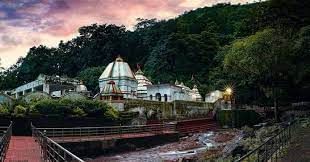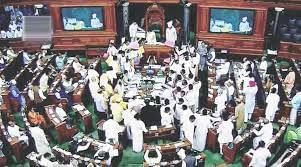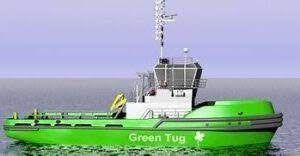UPSC Daily Current Affairs- 24th March 2023 | Current Affairs & Hindu Analysis: Daily, Weekly & Monthly PDF Download
GS-I
Gandhamardan Hill

Why in News?
Recently, the state government of Odisha declared the Gandhamardan Hill Range in Bargarh and Balangir district as a Biodiversity Heritage Site (BHS).
About Gandhamardan Hill:
- The Gandhamardan hill (Gandhamardan Reserve Forest) spreads in Bargarh and Balangir districts in Odisha.
- This ecologically fragile ecosystem is rich in floral and faunal diversity and is protected under the Odisha Biodiversity Rules - 2012.
- What is the Significance?The hill range has a diverse socio-economic, ecological and biological significance for the people of Odisha.
- This hill consists of medicinal plants, the hill system is considered the 'Ayurvedic paradise' of Odisha.
- The hills have 2 historical monuments (hill shrines) which are major pilgrimage sites of Odisha.
- Nrusinghanath temple is located on the northern slope.
- Harishankar temple on the southern side.
- In his chronicles, Hiuen Tsangdescribed the hill shrine as a Buddhist heritage site named
What are Biodiversity heritage sites?
- These are well-defined areas that are unique, ecologically fragile ecosystems with a high diversity of wild and domesticated species, the presence of rare and threatened species, and keystone species.
- Legal Provision: As per provision under Section 37(1) of ‘The Biological Diversity Act, 2002’, The State Government may, from time to time in consultation with the local bodies, notify the Official Gazette, of areas of biodiversity importance as under this Act.
Source: The Hindu
IPCC’s Synthesis Report: Urgent Action Needed For Climate-resilient Development

Why in News?
The Intergovernmental Panel on Climate Change (IPCC) recently released the synthesis report of its Sixth Assessment Report (AR6) cycle, which serves as a survival guide for humanity. The report highlights the urgent need for a climate-resilient development model that integrates adaptation, mitigation, and sustainable development for all.
Key Takeaways from the AR6 Report
- Human activity is driving global temperature rise, currently at 1.1°C above pre-industrial levels, with an estimated trajectory of 2.8°C by 2100.
- While the rate of emissions growth has slowed in the past decade, humanity is estimated to be on a 2.8° C (2.1°-3.4° C range) trajectory by 2100.
- This temperature rise is causing widespread impacts on climatic systems, with greater risks at lower temperatures than previously assessed.
- The IPCC report highlights that by 2019, humanity had already used up 80% of its carbon budget for limiting warming to 1.5°C, with developed economies being the biggest contributors.
- The report also notes that existing modelling studies, which are often used to assess emission trajectories, do not explicitly account for questions of equity.
Major implications for limiting warming to 1.5°C rather than 2°C
- Carbon Budget and Temperature Targets:
- The world’s carbon budget for 1.5°C is much lower than for 2°C. Global pathways show that limiting warming to 1.5°C requires a 43% reduction in greenhouse gas emissions by 2030, while for 2°C it is 21%.
- Even more concerning is that projected CO2 emissions from existing fossil fuel infrastructure already surpass the remaining carbon budget for 1.5°C.
- Striving for a 1.5° C target implies deep and immediate reductions in emissions in all sectors and regions, which makes more salient different national circumstances and questions of climate equity and operationalisation of the UNFCCC’s core principle of Common but Differentiated Responsibility and Respective Capabilities.
- Climate adaptation itself has limits:
- The report highlights that adaptation itself has limits, which implies that some losses and damages of climate change are inevitable.
- For example, the report finds that some coastal and polar ecosystems have already reached hard limits in their ability to adapt to a changing climate.
Key message of the report
- Climate-resilient development: Urgently adopting climate-resilient development a developmental model that integrates both adaptation and mitigation to advance sustainable development for all.
- Green transition: The report assesses the plethora of technologies and design options, such as solar energy or electric vehicles, that can help countries reduce emissions or become more resilient today at low costs, and in a technically feasible manner.
- Equity and social justice: Prioritising and addressing equity and social justice in transition processes are shown to be key to climate-resilient development.
- Net-zero emissions: To achieve climate-resilient development, the world needs to reach net-zero emissions. This may depend on large-scale carbon dioxide removals, which are challenging to achieve.
Progress and gaps in Climate Response
- Some progress has been made in policies and laws, with the effectiveness of policy tools like carbon markets.
- The report points out that there are gaps between modelled sustainable pathways and what countries have pledged (ambition gaps) as well as substantial gaps between what countries pledge and what they actually do (implementation gaps).
Way ahead
- Policy package: Policy packages that comprehensively address climate objectives can help countries meet short-term economic goals.
- Investment: Delayed action risks locking-in to high carbon infrastructure in this decade, and creating stranded assets and financial instability in the medium term. Therefore, high upfront investments in clean infrastructure are imperative.
- Financing needs to be increased manyfold: Despite sufficient global capital, both adaptation and mitigation financing need to increase many-fold, between three to six times for annual modelled mitigation investments, from 2020 to 2030.
Conclusion
- The IPCC AR6 synthesis report provides a blueprint for sustainable development and presents a sobering account of the present and future damages to ecosystems and vulnerable populations. It is crucial for governments and individuals worldwide to act urgently to mitigate and adapt to climate change, and pursue climate-resilient development.
Source: Indian Express
GS-II
Family Courts: Need for Expansion and Reforms

Why in news?
Mumbai’s only family court, inundated with divorce applications and family disputes, showcases a range of emotions and highlights the need for additional family courts to better address these complex and sensitive issues.
The Nature of Family Court Cases
- Mostly divorce cases: Common grounds for divorce include domestic violence, adultery, and dowry, but absurd reasons can also be found among the cases.
- Other issues and counselling: Family courts handle not only divorce cases but also maintenance, child custody, and alimony cases, with judges first suggesting counseling for couples seeking to end their marriages.
- Emotional scenes: Family courts witness heightened emotions, such as anger, blame, heartbreak, relief, and joy, as people struggle with the consequences of broken relationships.
- Inequal treatment: Instances of inequality in the judicial system are evident, with influential individuals sometimes receiving preferential treatment.
- Role of technology and empathy: During the COVID-19 pandemic, non-custodial parents sought to maintain contact with their children through video calls.
- For instance: A lactation room was recently inaugurated at the Bandra family court to provide a refuge for women with infants amidst child custody and divorce proceedings.
Why Family courts were established?
- Family courts were established to provide a forum for speedy settlement of family-related disputes, emphasizing non-adversarial conflict resolution and promoting conciliation.
What are the challenges faced by Family courts in India?
- Backlog of cases: One of the most significant challenges faced by family courts in India is the backlog of cases. Family disputes are often complex and require a significant amount of time to resolve, which results in long waiting periods for litigants.
- Lack of infrastructure: Many family courts in India lack adequate infrastructure, such as courtrooms, staff, and equipment, which makes it difficult to manage cases efficiently.
- Shortage of judges: There is a shortage of judges in family courts, leading to delays in the disposal of cases.
- Low awareness: Many people in India are not aware of the role and functions of family courts, which often leads to confusion and delays in the resolution of disputes.
- Socio-cultural factors: In many cases, socio-cultural factors such as patriarchy, gender discrimination, and dowry-related issues pose significant challenges to family courts in India.
- Limited jurisdiction: Family courts in India have limited jurisdiction and can only hear certain types of cases related to family disputes. This can result in some cases being heard by multiple courts, leading to delays and confusion.
The Need for Expansion and Reform in Family Courts: A Case of Mumbai’s family court
- With over 5,000 divorce cases pending in Mumbai’s family court, frivolous applications and counter-applications add to the pendency of cases and negatively impact children.
- The current seven judges at Mumbai’s family court are insufficient to handle the caseload, and the promise of 14 additional family courts in Mumbai, along with one each in Thane and Navi Mumbai, is a much-needed and welcome move.
Conclusion
- Mumbai’s family court reveals the complexity and emotional intensity of family disputes, and the urgent need for additional family courts to better address these sensitive issues. Expanding the number of family courts will help ensure that more families receive the support and resolution they need during these challenging times.
Source: The Hindu
What does ‘Guillotine’ refer to in legislative parlance?

Why in News?
Amidst the ongoing stalemate in Parliament, some MPs said the government may guillotine the demands for grants and pass the Finance Bill without any discussion in the Lok Sabha.
What is a Guillotine?
- A guillotine is an apparatus designed for efficiently carrying out executions by beheading.
- It consists of a large, weighted blade that is raised to the top of a tall, erect frame and released to fall on the neck of a condemned person secured at the bottom of the frame, executing them in a single, clean pass.
- The origin of the exact device as well as the term can be found in France.
- The design of the guillotine was intended to make capital punishment more reliable and less painful in accordance with new Enlightenment ideas of human rights.
Guillotine Motion in Parliament
- In legislative parlance, to “guillotine” means to bunch together and fast-track the passage of financial business.
- It is a fairly common procedural exercise in Lok Sabha during the Budget Session.
- After the Budget is presented, Parliament goes into recess for about three weeks, during which time the House Standing Committees examine Demands for Grants for various Ministries, and prepare reports.
- After Parliament reassembles, the Business Advisory Committee (BAC) draws up a schedule for discussions on the Demands for Grants.
- Given the limitation of time, the House cannot take up the expenditure demands of all Ministries; therefore, the BAC identifies some important Ministries for discussion.
- It usually lists Demands for Grants of the Ministries of Home, Defence, External Affairs, Agriculture, Rural Development and Human Resource Development.
Why use such a motion?
- Members utilise the opportunity to discuss the policies and working of Ministries.
- Once the House is done with these debates, the Speaker applies the “guillotine”, and all outstanding demands for grants are put to vote at once.
- This usually happens on the last day earmarked for the discussion on the Budget.
- The intention is to ensure the timely passage of the Finance Bill, marking the completion of the legislative exercise with regard to the Budget.
Source: The Hindu
GS-III
Comprehensive Economic Partnership Agreement (CEPA)

Why in News?
India and the United Arab Emirates (UAE) are gearing up for a review of the Comprehensive Economic Partnership Agreement (CEPA) that may see discussions towards the integration of key portals of both nations to boost trade.
About Comprehensive Economic Partnership Agreement (CEPA):
- It is a type of free trade pact that covers negotiation on the trade in services and investment, and other areas of economic partnership.
- CEPA also looks into the regulatory aspect of trade and encompasses an agreement covering the regulatory issues.
What are the types of Trade Agreements?
- Free Trade Agreement: It is an agreement in which two or more countries agree to provide preferential trade terms, tariff concession etc. to the partner country. Here a negative list of products and services is maintained on which the terms of FTA are not applicable.
- Preferential Trade Agreement: In this, two or more partners give preferential right of entry to certain products. This is done by reducing duties on an agreed number of tariff lines. India signed a PTA with Afghanistan.
- Comprehensive Economic Partnership Agreement: It is more comprehensive than an FTA. CECA/CEPA also looks into the regulatory aspect of trade.
- Comprehensive Economic Cooperation Agreement: CECA generally covers negotiation on trade tariffs and TQR rates only. It is not as comprehensive as CEPA. India has signed CECA with Malaysia.
- Framework agreement: It primarily defines the scope and provisions of the orientation of the potential agreement between the trading partners. It provides for some new areas of discussion and set the period for future liberalisation. India has previously signed framework agreements with the ASEAN, Japan etc.
Source: Business Standard
Green Tug Transition Programme

Why in News?
Recently, the Union Minister of Ports, Shipping & Waterways launched the ‘Green Tug Transition Programme’ (GTTP).
About Green Tug Transition Programme:
- India’s first National Centre of Excellence in Green Port & Shipping (NCoEGPS) was inaugurated in Gurugram, Haryana.
- In the event ‘Green Tugs Transition Programme (GTTP)’ was launched for operating green tugs in all major ports by 2025.
- Nodal Entity: NCoEGPS will act as the nodal entity for this programme.
- India aims at becoming a ‘Global Hub for Green Ship’ building by 2030 with the launch of the Green Tug Transition Programme (GTTP).
- ‘Green Hybrid Tugs’ will be powered by Green Hybrid Propulsion systems. These Green hybrid tugs will subsequently adopt non-fossil fuel solutions like (Methanol, Ammonia, and Hydrogen).
- At least, 50% of all the Tugs are likely to be converted into Green Tugs by 2030.
What are Tugs?
- A tug boat or tugs are marine vessels that manoeuvre ships by pushing or pulling them, mostly using tow lines. They tug ships in circumstances where the ships cannot or do not move using their power like in narrow harbours, canals, etc.
Source: The Hindu
India’s Water Vision: Roadmap for a Sustainable Future

Why in News?
India’s Water Vision addresses key water-related challenges, highlights ongoing interventions, and offers recommendations for ensuring sustainability and serving as a model for other countries to achieve clean water and sanitation for all.
India’s Water vision
- India’s Water Vision is a government initiative aimed at providing clean and safe water to all citizens of India.
- It was launched in 2019 and aims to provide water security, improve water use efficiency, and increase the use of recycled water.
- The initiative also focuses on conservation of water resources and promoting sustainable water practices.
- It is a plan announced as part of the Prime Minister’s Vision India @ 2047 initiative.
The Importance of India’s Water Vision
- Climate change: India’s Water Vision comes at a critical time when the IPCC’s Sixth Assessment Report confirms the adverse impacts of human-caused climate change on water availability and security, and the UN 2023 Water Conference takes place after a 46-year gap.
- G20 presidency: India’s G20 presidency can set an example for other countries to prioritize water action, leading to a global water action agenda with clear commitments and pledges to accelerate progress towards achieving Sustainable Development Goal 6 by 2030.
Challenges and Interventions in India’s Water Sector
- Jal Jeevan Mission: The Jal Jeevan Mission has increased tap connections in rural households, but there is a need to ensure reliability and quality of water supply through investments in source sustainability and water quality surveillance for improved social, economic, and public health outcomes.
- Groundwater regulation: Strengthen groundwater governance by making substantial progress in decision-making through groundwater atlas, aquifer mapping, and extensive monitoring. Encourage states like Rajasthan and Punjab to pass bills and fully implement the central government’s model law for regulating groundwater.
- Namami Gange Programme and Atal Mission for Rejuvenation: Focus on pollution abatement and river rejuvenation by improving wastewater management through initiatives like Namami Gange Programme and Atal Mission for Rejuvenation and Urban Transformation. Realize the potential of treated wastewater for irrigation by strengthening treatment infrastructure and pricing freshwater adequately.
- Per Drop More Crop initiative: Improve water use efficiency in irrigated agriculture by promoting micro-irrigation systems such as drip and sprinkler technologies through the Per Drop More Crop initiative. Scale up water-saving technologies through targeted subsidies for small and marginal farmers.
- Atal Bhujal Mission: Engage local communities in water management through programs like Atal Bhujal Mission, which aims to improve groundwater management in water-stressed blocks by involving communities in the preparation of water security plans, ensuring climate resilience.
Recommendations for Ensuring Sustainability of Water Actions
- Ensure sustainable source: Ensure access to safely managed domestic water services by focusing on source sustainability and water quality surveillance, leading to positive social, economic, and public health outcomes.
- Prompt groundwater regulation: Encourage all states to fully implement groundwater regulation laws and take prompt action to address groundwater overexploitation, especially in major groundwater-consuming states.
- Improve wastewater treatment: Strengthen wastewater treatment infrastructure to treat a larger proportion of municipal sewage and ensure that freshwater is adequately priced to promote safe reuse of treated water for irrigation.
- Efficient water use practice: Scale up water-saving technologies in agriculture by providing targeted subsidies to small and marginal farmers, facilitating the adoption of water-efficient practices and potentially saving 20% of currently used irrigation water by 2050.
- Improving community engagement: Support ongoing community engagement in water management by ensuring the development and implementation of annual water security plans, taking corrective action when necessary to ensure water security in vulnerable regions.
Conclusion
India’s Water Vision offers a comprehensive roadmap for addressing water-related challenges and achieving clean water and sanitation for all. By sharing its successes, discussing the sustainability of its initiatives, and offering support to other countries, India can leverage its G20 presidency to accelerate progress toward Sustainable Development Goal 6 and serve as a model for global water action.
Source: The Hindu
|
44 videos|5343 docs|1128 tests
|
FAQs on UPSC Daily Current Affairs- 24th March 2023 - Current Affairs & Hindu Analysis: Daily, Weekly & Monthly
| 1. What are the subjects covered in GS-I, GS-II, and GS-III exams? |  |
| 2. How can I prepare for the UPSC exams? |  |
| 3. What is the significance of daily current affairs in UPSC exams? |  |
| 4. Are there any resources available for UPSC aspirants to stay updated with daily current affairs? |  |
| 5. How can I effectively manage time during the UPSC exams? |  |
















